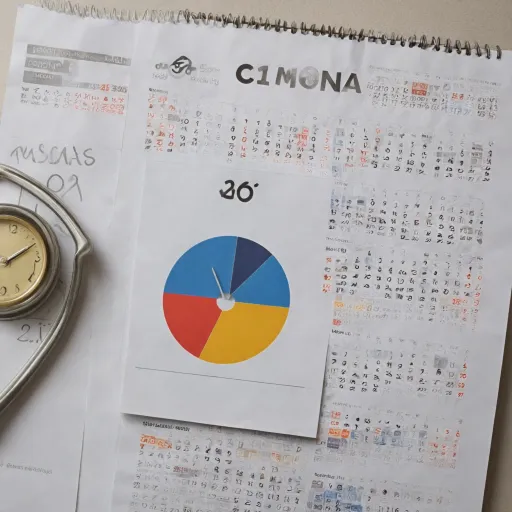
Overview of Illinois Lunch Break Regulations
Legal Landscape of Illinois Meal and Rest Breaks
In Illinois, understanding the break laws surrounding employee meal times and rest breaks is essential for both employers and employees. The Illinois labor laws establish specific rules related to breaks, particularly for workers' meal periods. Employers need to be informed of these regulations to stay compliant and ensure that their workforce operates efficiently.According to the Illinois Department of Labor, any employee who works for 7.5 consecutive hours must be provided with a minimum of a 20-minute meal break. This meal period should be granted no later than five hours into the employee’s shift. These break requirements are put in place to ensure workers have adequate time to rest, eat, and recharge during their work hours, contributing positively to their productivity.
Additionally, workers covered by specific collective bargaining agreements could have different terms regarding meal breaks and hours worked. Thus, it's crucial for human resources departments and employers to review these agreements carefully to align their internal policies with state labor laws.
For more information on similar labor regulations, you can explore how sick leave laws are structured in other states, such as Arizona's sick leave regulations. Understanding variations can provide business leaders with a broader perspective on how break regulations can differ, offering insights that may influence company policies and productivity strategies.
Impact on Employee Productivity
Enhancing Efficiency Through Break Management
Understanding the impact of lunch break regulations on employee productivity is essential for both employers and employees. With Illinois enforcing specific break laws, companies have the opportunity to optimize work environments by effectively managing rest and meal periods.
Studies have shown that well-timed breaks can significantly enhance employee productivity and satisfaction. Physiologically, our brains function better with periodic downtime throughout the work hours. When employees work for long duration without proper meal breaks or rest periods, it can lead to fatigue, reduced concentration, and consequently, decreased efficiency.
Employers in Illinois are mandated to provide certain meal and rest breaks to their employees, typically involving a 20-minute rest for every 7.5 consecutive hours worked. Failing to comply with these laws not only risks fines but also impacts employee morale. A well-rested team is found to be more motivated and engaged, showcasing improved performance during their shift hours.
From a productivity standpoint, adhering to Illinois meal and rest break requirements is smart business. Not only does it reduce workplace turnover by improving employee satisfaction, but it also ensures that workers maintain high levels of performance throughout their work day. These legal meal periods and rest breaks help manage the energy and morale of the team, ultimately benefitting the organization’s overall efficiency.
Compliance Challenges for HR Professionals
Challenges in Meeting Compliance with Lunch Break Regulations
For HR professionals, ensuring compliance with Illinois meal break laws can present a few challenges. These challenges stem from various factors such as understanding the specific break requirements and adjusting work hours to accommodate them. Employers must navigate the complexities of ensuring employees have adequate rest periods, which directly impacts adherence to labor laws.
The Illinois Department of Labor outlines that employers are required to provide a minimum 20-minute meal break for employees who work 7.5 consecutive hours or more. For many employers, particularly in industries with fluctuating demand and tight schedules, such as retail or hospitality, accommodating these meal periods into a shift can be difficult without affecting workflow or service delivery.
Moreover, collective bargaining agreements may dictate different or additional stipulations for meal breaks and rest periods that go beyond state law. HR departments must be cognizant of these additional layers of agreements to ensure they meet all legal and negotiated obligations.
Some employers struggle with managing labor costs associated with compliance, as meeting these break requirements may require altering work shifts or hiring additional staff to cover break periods. This can result in increased overheads and complex scheduling concerns.
To address these challenges, employers might consider leveraging tools like workforce analytics solutions to optimize scheduling and ensure compliance without sacrificing productivity. By utilizing such solutions, HR professionals can predict labor needs, manage employee workloads more effectively, and ensure that meal breaks and rest periods are appropriately allocated.
Role of Human Resources Analytics
Leveraging Analytics for Effective Break Management
In the realm of human resources, data analytics serves as an invaluable tool for navigating complexities such as Illinois' lunch break regulations. By applying analytical methods, human resource teams can better understand how meal periods and rest breaks influence employee performance and compliance with labor laws. One key aspect is tracking work hours. Employers can leverage data analytics to monitor the exact times employees start and end their shifts. This provides insights into how the allotted lunch and rest breaks align with the Illinois break requirements. The data can reveal patterns or discrepancies that might necessitate adjustments in break scheduling. Moreover, analytics can be used to assess the impact of meal breaks on employee productivity. By examining hours worked before and after breaks, employers can quantify changes in performance levels. Understanding these dynamics helps in making data-driven decisions about adjusting meal period timing, ensuring optimal rest for employees. Compliance challenges often arise around minute details in break laws. Human resources analytics can help in identifying trends in employee behavior, such as frequent delays in returning from breaks or inconsistencies with Illinois' labor laws regarding consecutive hours. This awareness empowers HR professionals to refine policies and provide solutions like adjusting meal breaks for different shifts. By adopting analytics, employers can ensure they are adequately meeting the Illinois Department of Labor's regulations. It also aids in forecasting future trends in break management and preparing for any potential legislative changes. All these efforts contribute to enhanced employee satisfaction and improved work environment. In essence, the strategic use of human resources analytics not only ensures compliance with meal and rest break laws but also fuels a more productive and harmonious workplace.Case Studies: Successful Implementation
Instances of Effective Strategies in Place
The implementation of Illinois lunch break regulations, when effectively managed, can bring substantial benefits to both employees and employers. Successful instances have showcased how strategic planning and compliance with the laws governing meal periods and rest breaks can markedly improve work efficiency and employee satisfaction. Consider employers who have integrated regular meal breaks within their labor schedules. These employers provide rest periods that are not just compliance checkboxes but are seen as essential components of an employee’s workday. By applying clear break requirements and ensuring adherence to Illinois break and meal period laws, these employers pave the way for enhanced productivity and morale. Companies that have fine-tuned their shift structuring to accommodate necessary meal breaks within hour work requirements serve as exemplary models. For instance, scheduling meal breaks after four consecutive hours of work, in compliance with Illinois meal laws, has been linked with reduced fatigue and increased alertness among employees. Another noteworthy approach involves the utilization of flexible labor policies, often seen in collective bargaining agreements. These policies allow varying break times and durations depending on the specific needs of the work hours and employees. Best-in-class Illinois employers who maintain transparency in labor policies ensure that employees are aware of when and how they can take their meal breaks, which not only aligns with break laws but also empowers employees to manage their work-life balance effectively. The Illinois Department of Labor provides guidelines and periodic updates on meal break regulations, essential for ensuring employers stay informed. Additionally, employers who leverage human resources analytics can further enhance their strategies. By analyzing data trends, these employers can identify if their break policies positively correlate with productivity metrics and employee wellbeing, making data-driven adjustments as needed for optimal alignment with labor laws. In essence, these successful implementations underscore the importance of strategic planning and proactive compliance efforts. Employers who adapt and optimize their break policies not only adhere to regulations but also foster an efficient, harmonious work environment.Future Trends in Break Regulations
Adapting to Evolving Break Regulations
As we look to the future of Illinois lunch break regulations, it's clear that changes in labor laws and workplace dynamics will continue to shape how employers and employees approach meal and rest periods. The Illinois Department of Labor may introduce new guidelines to address the evolving needs of the workforce, ensuring that break requirements align with modern work environments.
Technological Integration in Break Management
Employers are increasingly leveraging technology to manage break compliance effectively. Advanced HR analytics tools can track employees' work hours and ensure that meal breaks and rest periods are provided as per legal requirements. This not only aids in compliance but also enhances employee satisfaction by ensuring fair treatment across the board.
Collective Bargaining and Break Policies
Collective bargaining agreements will likely play a significant role in shaping future break policies. As employees work to negotiate better terms, employers must be prepared to adapt their break policies to meet these agreements. This could include more flexible meal periods or additional rest breaks, tailored to the specific needs of the workforce.
Impact of Remote Work on Break Regulations
The rise of remote work has introduced new challenges and opportunities for break regulations. Employers must consider how to monitor and enforce break laws for employees working from home. This may involve innovative solutions to ensure that employees take their required breaks, even when not in a traditional office setting.
Emphasizing Employee Well-being
Future trends in break regulations will likely emphasize employee well-being more than ever. Employers are recognizing the importance of rest periods in maintaining productivity and reducing burnout. By prioritizing employee health, companies can foster a more engaged and productive workforce.













